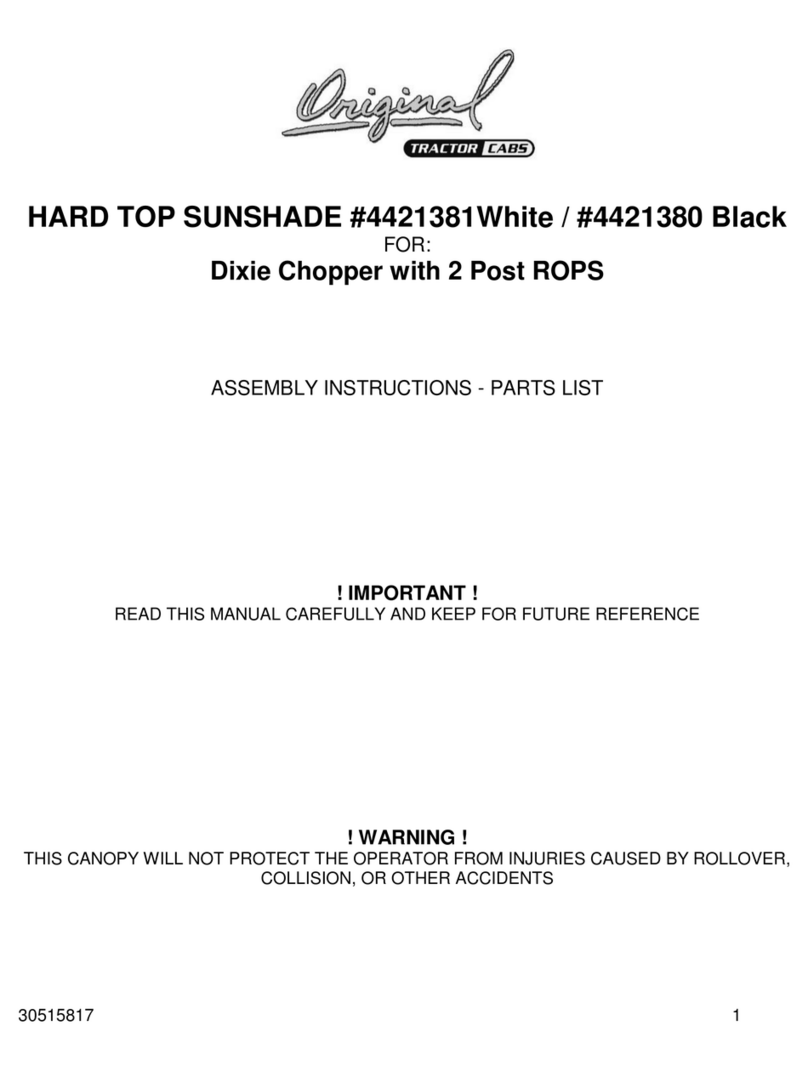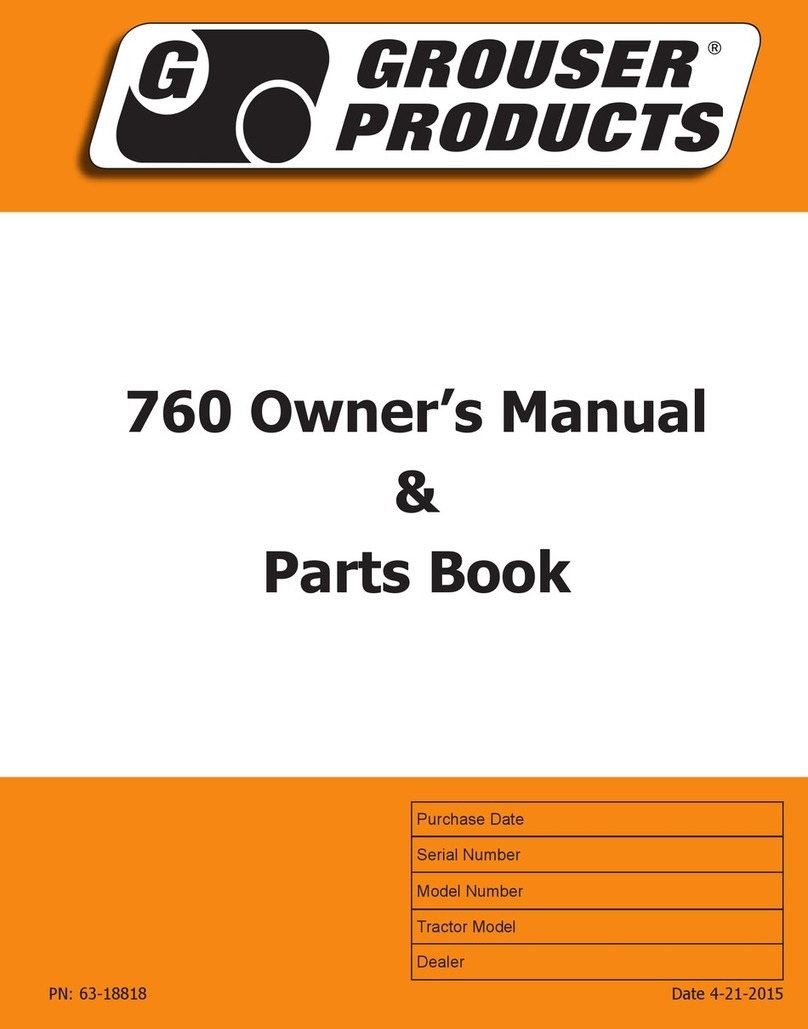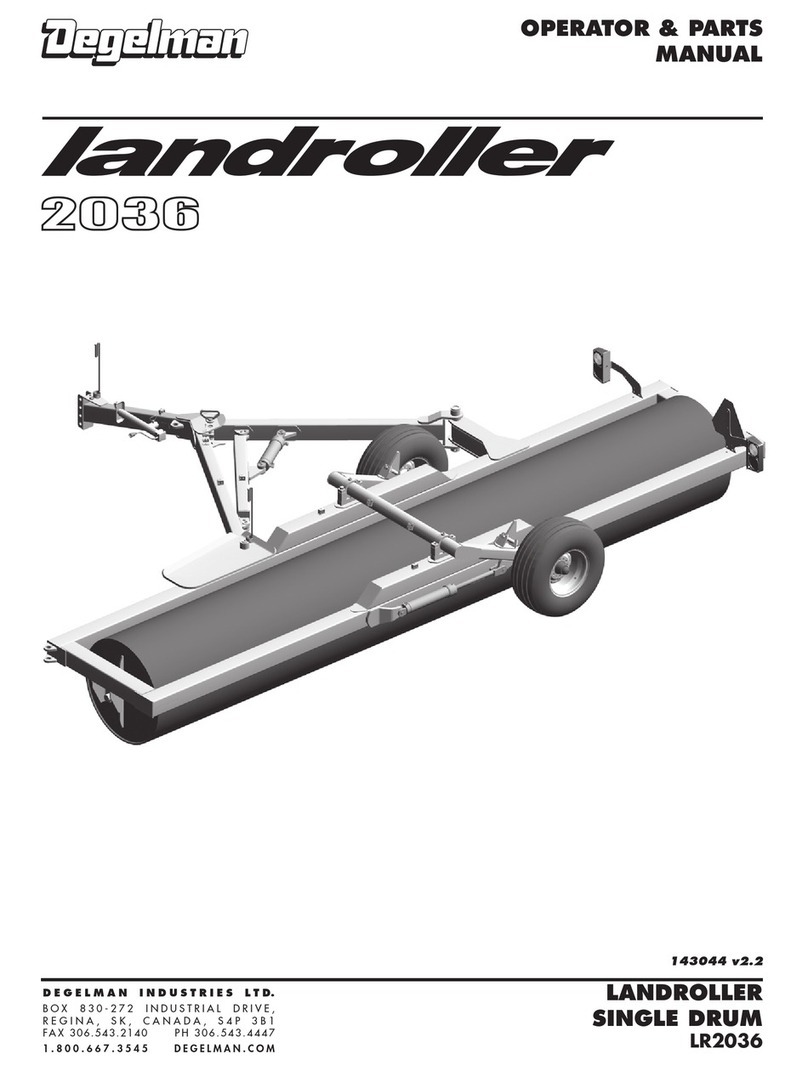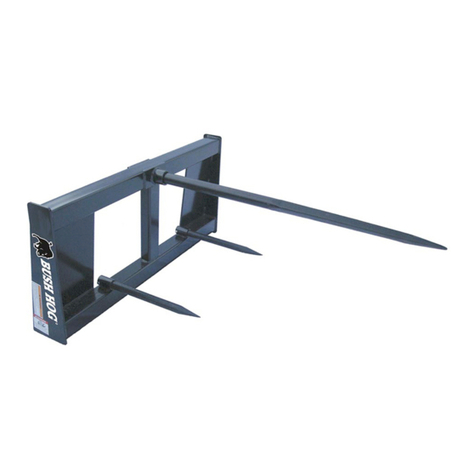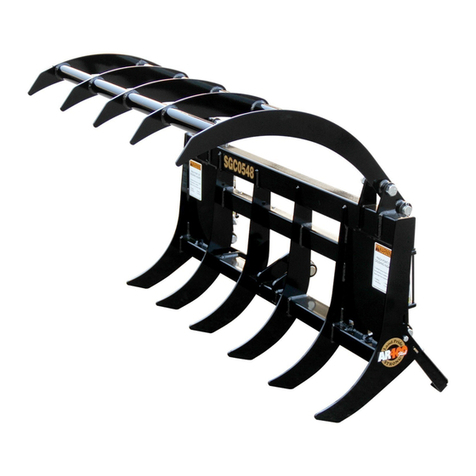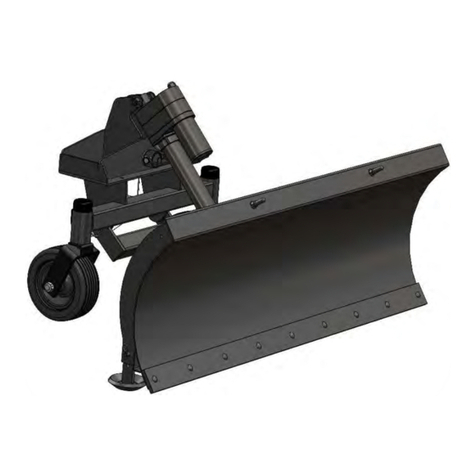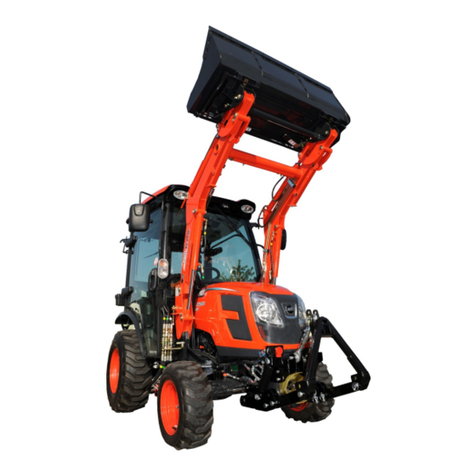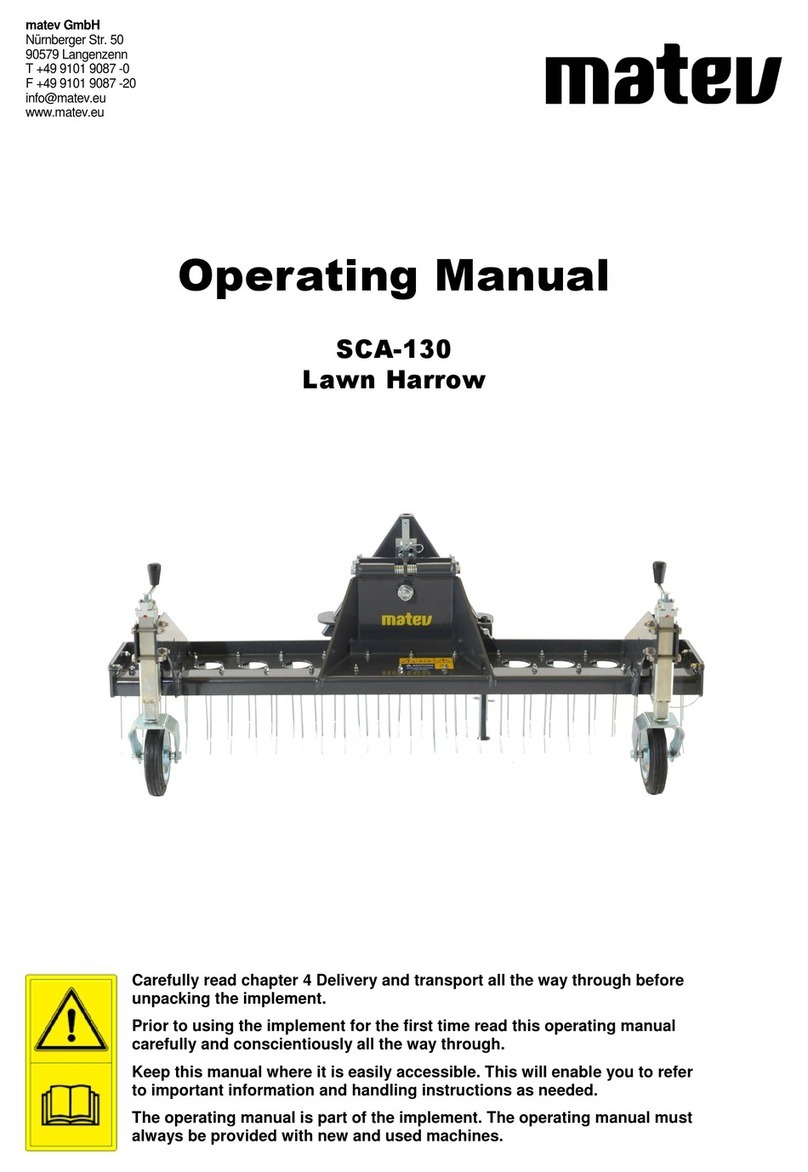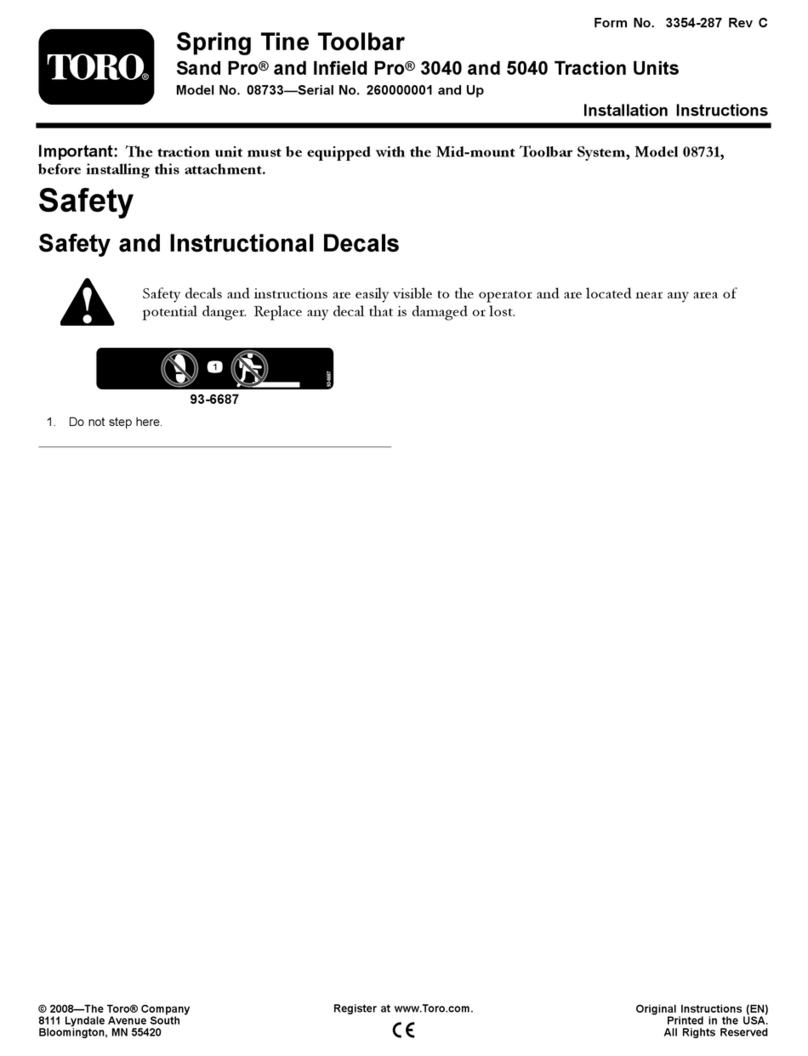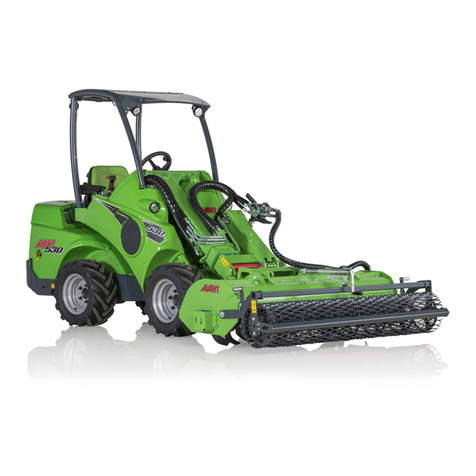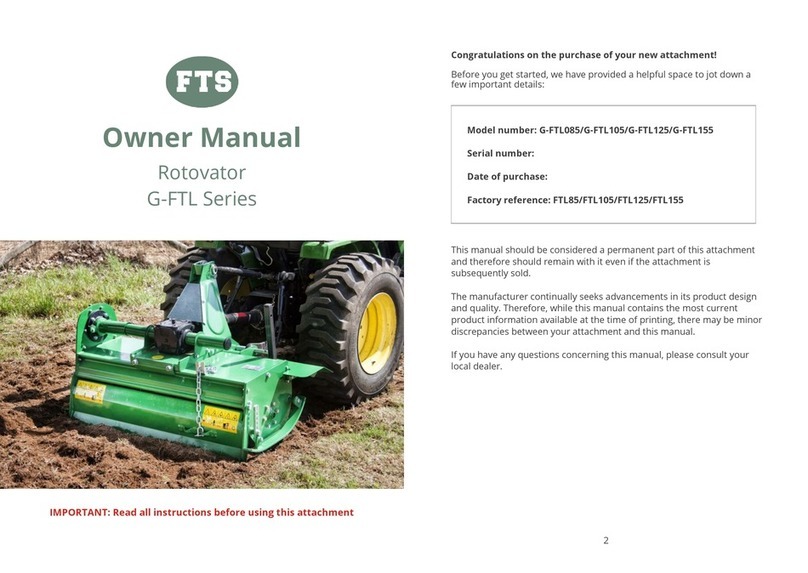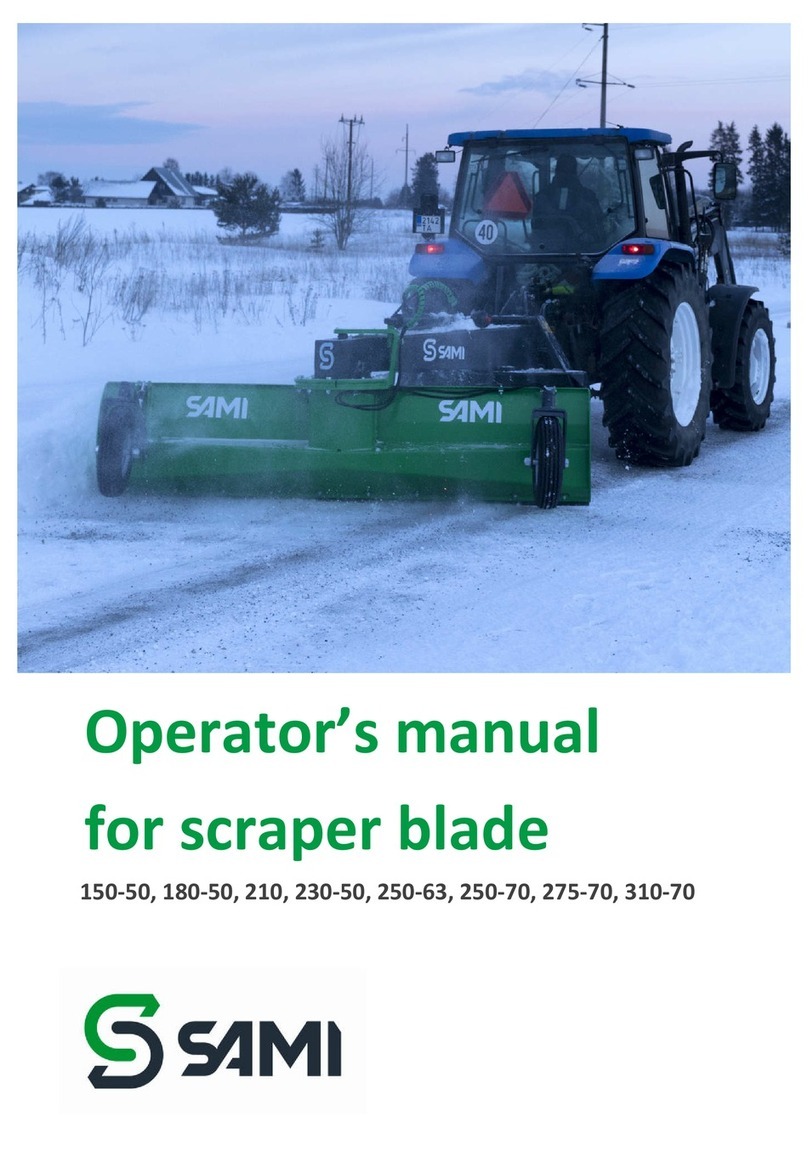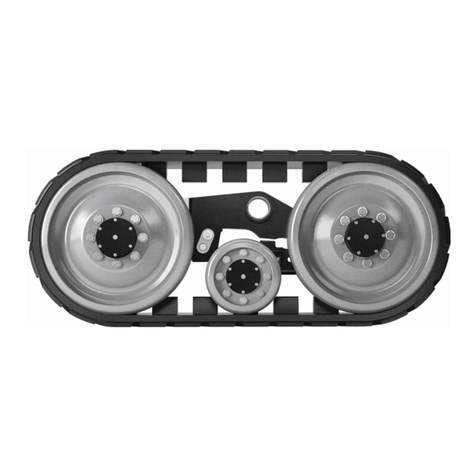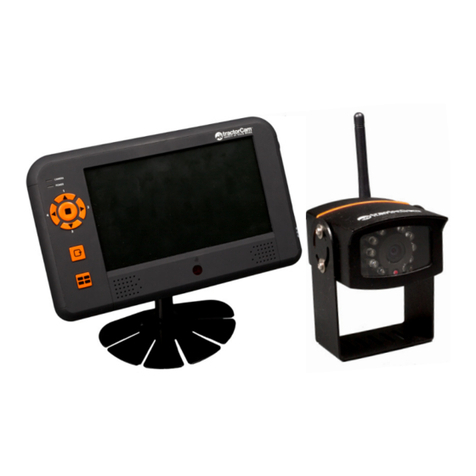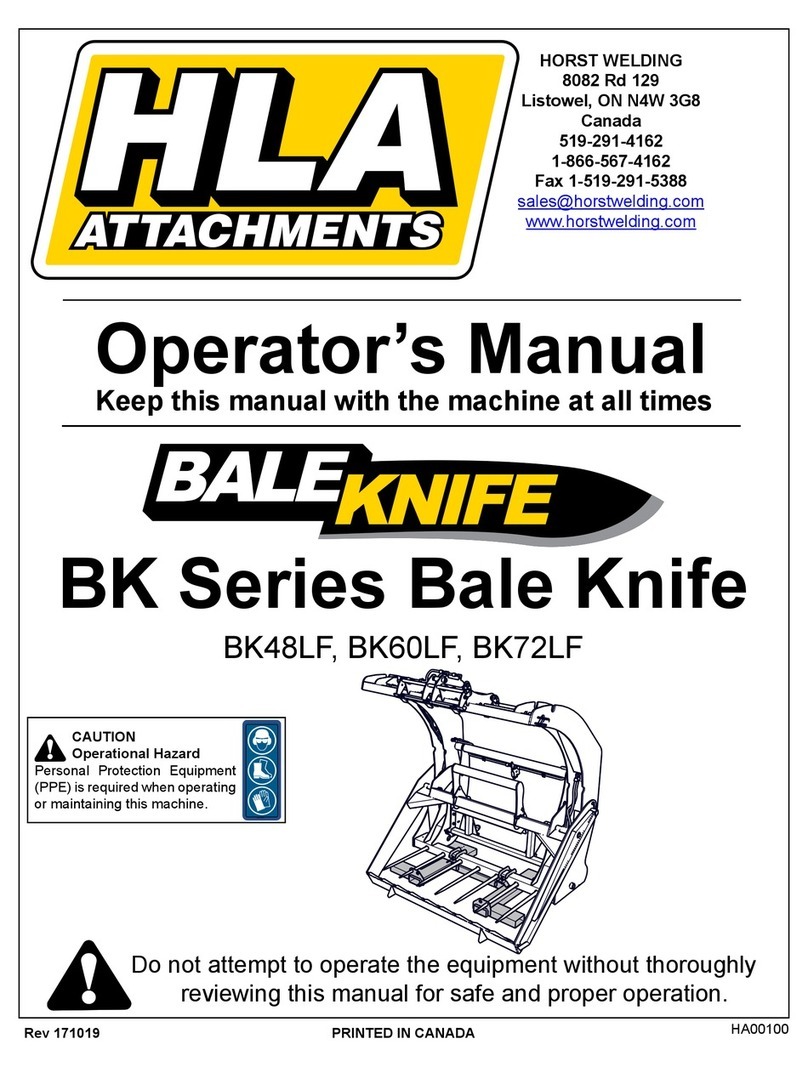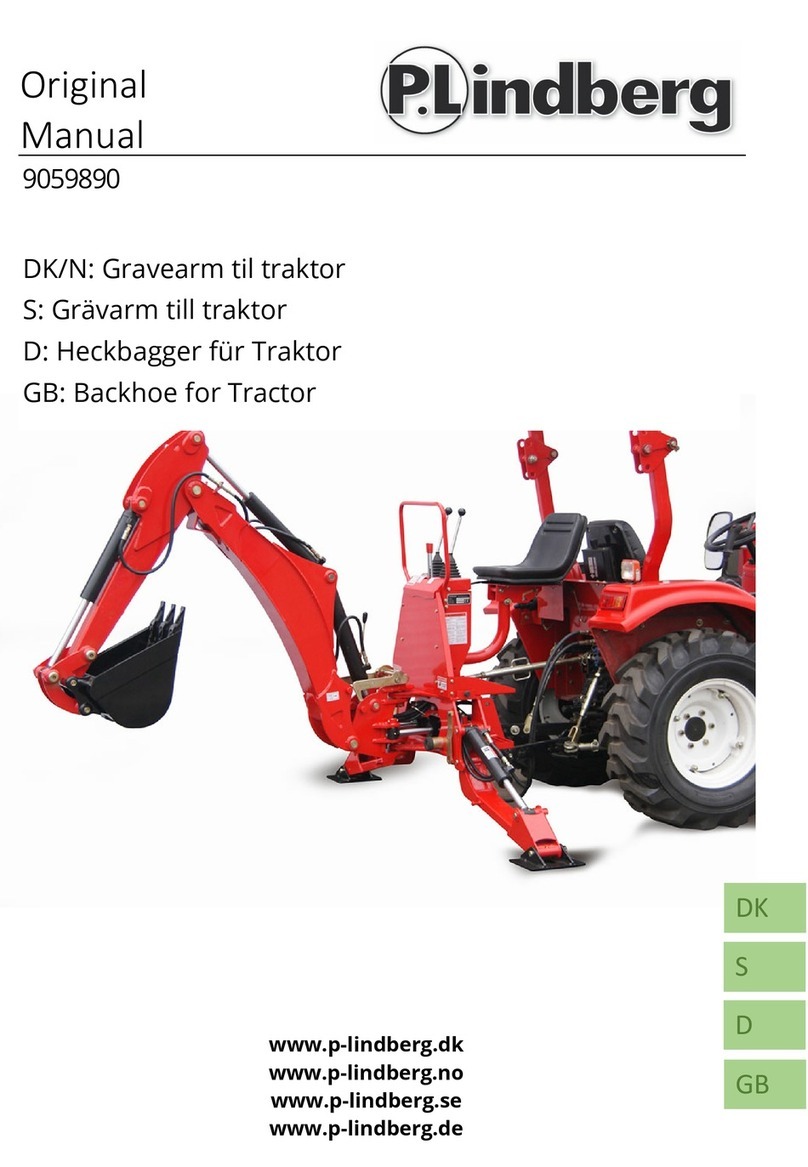
9
2.1- Safety adhesive labels
Read the instruction manual before
turning on the machine. Pay close
attention to all the operating and safety
recommendations, in order to avoid any
unexpected accidents that may occur
while operating the machine.
Turn off the tractor and remove the key
from the ignition before performing any
maintenance, adjustment, lubrication,
cleaning jobs etc., on the machine.
Thereby you will avoid any accidental
actuation and avoid dangerous
situations that may cause serious
accidents.
Do not stay on the machine while it is
operating or carrying loads. Sudden jolts,
starting, or stopping can cause falling,
causing an accident. Avoid all dangerous
situations.
Keep your distance and never place your
hands near the moving helix transporter,
as contact can cause a serious accident.
Do not get close to the machine until it is
completely motionless. Remember
rotating parts do not stop moving
immediately after turning the machine
off. Some parts continue moving also
unnoticeably, but you cannot see them.
Keep your hands away
from chains and other
moving parts, grabbing
t h e m a n d c a u s e
injuries.
Do not open or remove
covers or safety shields
from the machine when
it is operating.

